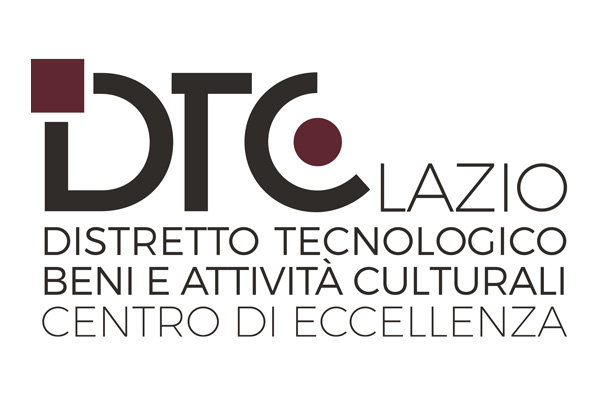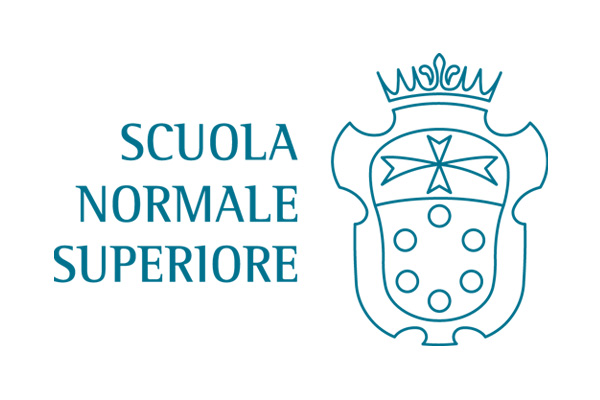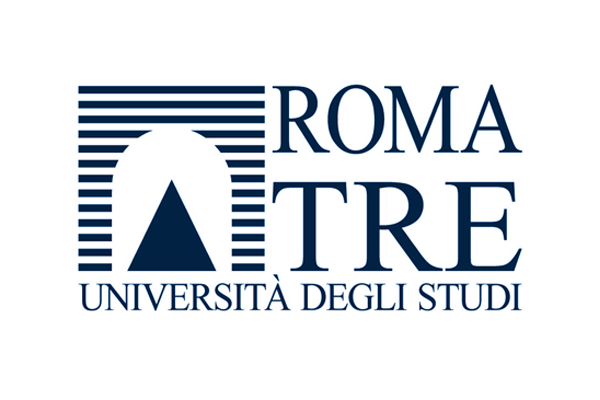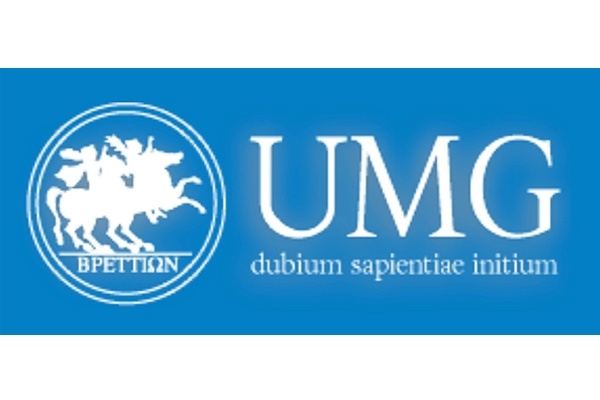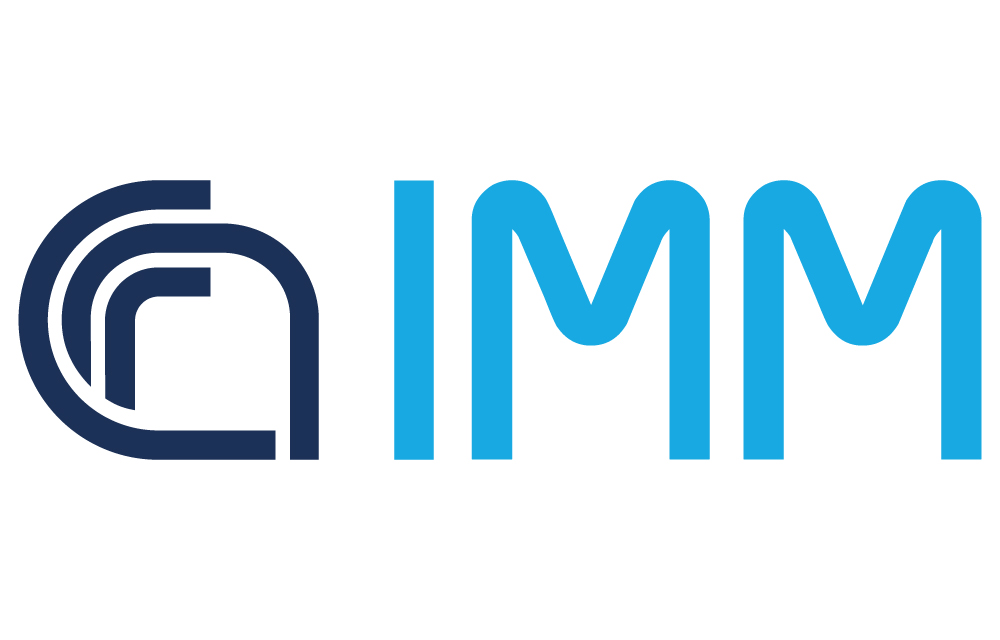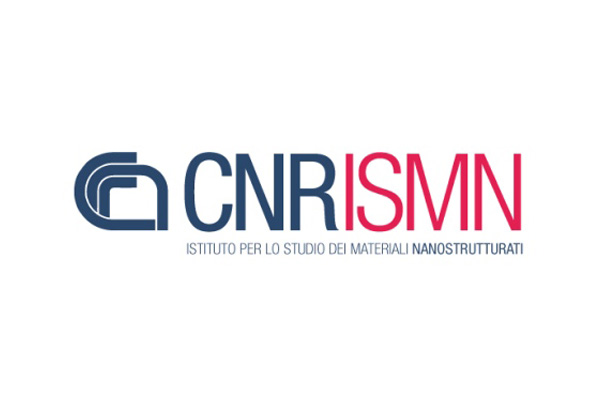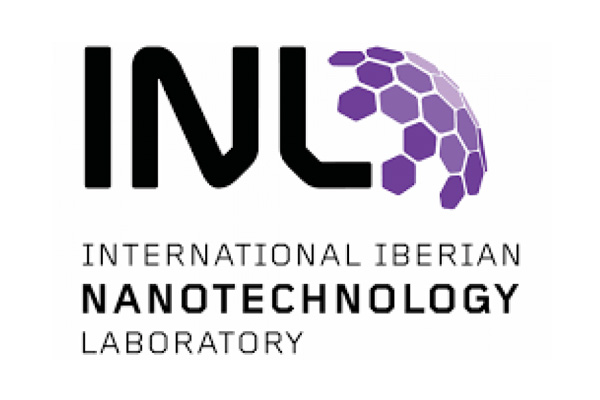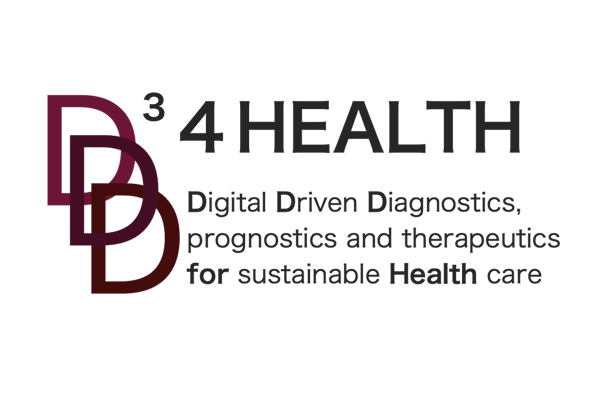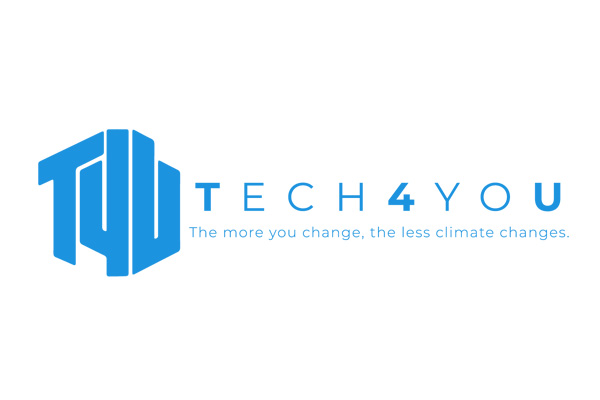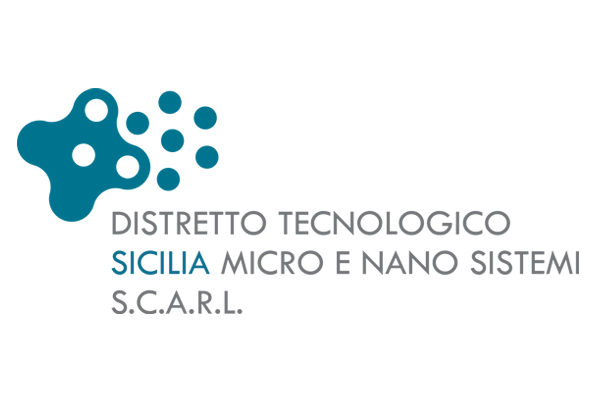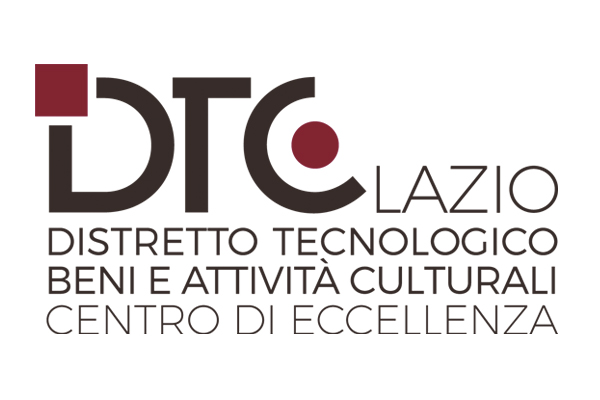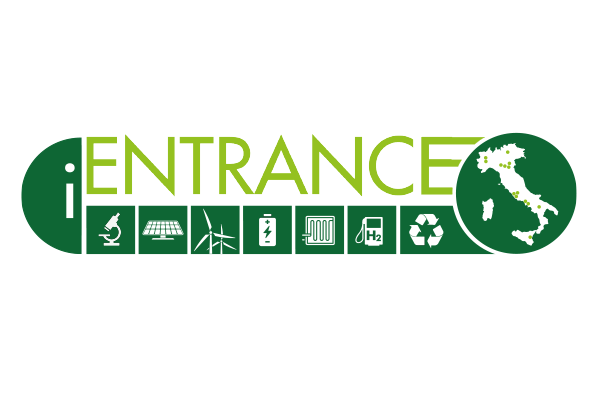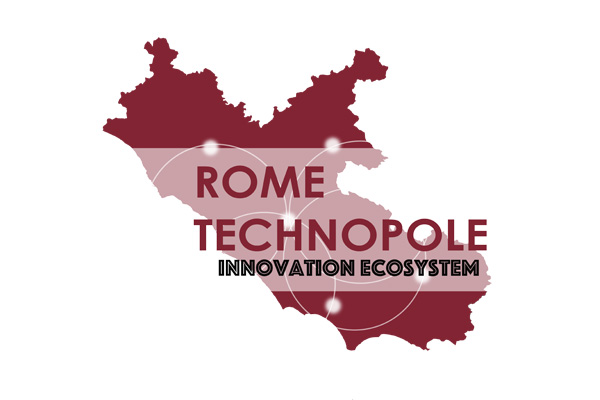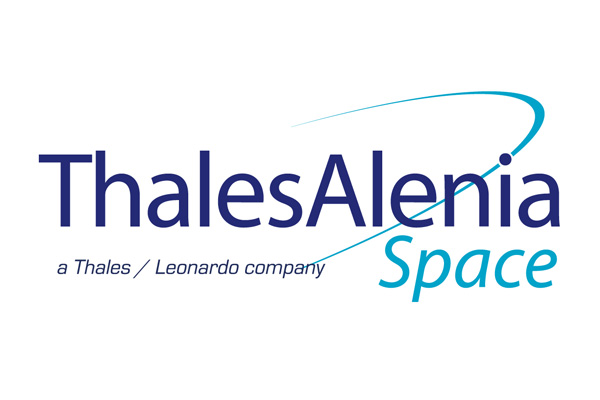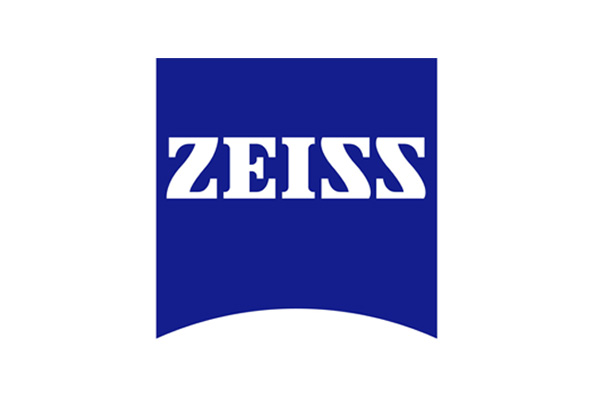 |
||||||||||||
|
Special Event I YoungInnovation September 11-12-13 |
||||||||||||
|
Chairs: SCIENTIFIC COMMITTEE: PROGRAM COMMITTEE: ORGANIZING BOARD: |
||||||||||||
| Co-organized with | ||||||||||||
 |
||||||||||||
|
Researchers have always played a fundamental role in finding solutions to complex challenges. For this reason, NanoInnovation is committed to encouraging and facilitating the participation of young researchers (under 35 years of age) in the scientific world and supporting their careers through mentoring activities. In line with these objectives, Young Innovation has evolved into a semi-independent event, now in its fourth edition, to be held from 11 to 13 September 2024, increasingly enriched with significant presences and aimed at the researchers of the future. Young Innovation has become a well-defined event consisting of three days of discussions, divided into 90-minute sessions. In particular, the sessions will be developed to include: 1. Parallel sessions focusing on the macro areas of Material Sciences and Life Sciences. 2. Other sessions covering topics common to both the above macro areas. Each Young Innovation session will include:
The specific topics of the event will be selected by the Chairs and the NanoInnovation Organizing Committee, who will also appoint the members of the Young Innovation Scientific Committee and the Organizing Committee. As for the young speakers interested in participating, the spontaneous application requires: 1. the uploading of the abstract of their research through the website, on the dedicated submission section CALL FOR POSTERS. 2. the ticking the ‘Young Innovation” box during the submission. Selected abstracts from the under-35 applicants, based on the quality of the proposed research and its relevance to the theme of the session, will be invited to present during Young Innovation and could be displayed in printed form during Nanoinnovation and uploaded on the website in the dedicated session. Selected participants will not have to pay the submission fee required for the regular poster session. Those not selected for the event can still pay the fee and participate by uploading their poster to the website and displaying it during the event. Overall, the purpose of the Young Innovation event is to provide a platform for these emerging scientists to share their research and network with colleagues at the event. As such, the event serves not only as a showcase for cutting-edge research, but also as a catalyst for collaboration, inspiration and the advancement of scientific knowledge. |
||||||||||||
|
A very special and sweet thank you goes to 'Antica Dolceria Bonajuto' for the energy boost to the YoungInnovation crew (www.bonajuto.it)
|
||||||||||||
|
Young Innovation 2024 is designed to bring together the brightest emerging talents across Life Sciences and Materials Science, offering a platform where innovation in these fields can intersect and flourish. Throughout the three days of the event, participants will engage with a range of sessions that reflect the cutting-edge research and technological advancements in both domains. While the event primarily runs in parallel tracks dedicated to Life Sciences and Material Science, selected sessions serve as a crucial intersection, allowing for interdisciplinary dialogue and collaboration. These infographics here available encapsulate the essence of Young Innovation 2024, offering a clear visual guide to the program’s structure and content. They underscore the balance between focused disciplinary sessions and the shared, interdisciplinary spaces that define the event. 11 Sep (1st day) - the program of the day at-a-glance |
||||||||||||
| ROOM 7 | ||||||||||||
| September 11 | ||||||||||||
| 09:00 - 10:30 Next-generation semiconductor devices for power electronics applications SE.I.1- TT.I.H |
||||||||||||
| in cooperation with | ||||||||||||
 |
||||||||||||
| Chair: Simonpietro AGNELLO, University of Palermo | ||||||||||||
| The session will delve into the forefront of semiconductor technology, showcasing innovative advancements that are set to revolutionize the field of power electronics. This session will bring together experts to discuss the latest developments in semiconductor materials, device architectures, and fabrication techniques. This session aims to foster collaboration and knowledge exchange, providing a platform for discussing the future directions of semiconductor technology in power electronics. Participants will leave with a comprehensive understanding of how next-generation semiconductor devices are poised to drive innovation and efficiency in power electronics applications. | ||||||||||||
| SE.I.1.1 TT.I.H.1 |
Introductive Keynote Filippo GIANNAZZO - CV CNR-IMM New devices based on 2D materials integrated on wide-bandgap semiconductors |
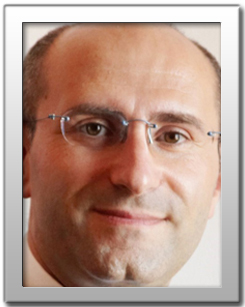 |
||||||||||
| SE.I.1.2 TT.I.H.2 |
Fiorenza ESPOSITO - CV CNR-IMEM Liquid precursor-based Chemical Vapor Deposition and Transfer of Monolayer MoS2 on GaN |
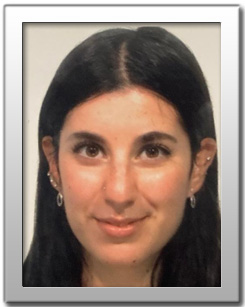 |
||||||||||
| SE.I.1.3 TT.I.H.3 |
Francesca MIGLIORE - CV University of Palermo Photoluminescence enhancement in 1L-MoS2 by thermal treatments |
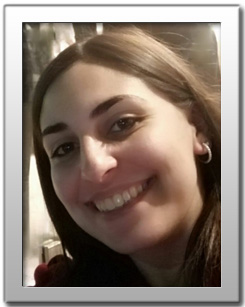 |
||||||||||
| SE.I.1.4 TT.I.H.4 |
Umberto DELLASETTE - CV CNR-NANOTEC Nanostructured Perovskites: Single Crystals for smart Optics and Optoelectronics |
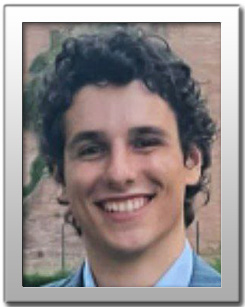 |
||||||||||
| SE.I.1.5 TT.I.H.5 |
Francesca SANTANGELI - CV Sapienza University of Rome Giant bandgap tuning of InN nanowires by post-growth Hydrogen irradiation for creation of tunable quantum dots |
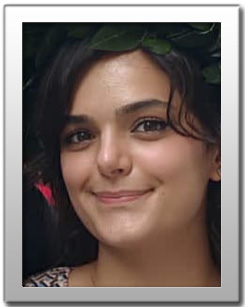 |
||||||||||
| Round table on the Topic | ||||||||||||
| 09:00 - 10:30 Artificial intelligence and Machine learning in digital health SE.I.2 - TT.I.I |
||||||||||||
| Co-organized with University Magna Graecia of Catanzaro | ||||||||||||
| in cooperation with SIRTEPS e SITELF | ||||||||||||
 |
||||||||||||
| Chair: Alessia BRAMANTI, University of Salerno | ||||||||||||
| The evolution of digital technologies is opening new frontiers in healthcare, thanks to the integration of Artificial Intelligence (AI) and Machine Learning. These powerful technologies are tackling complex medical challenges and transforming the healthcare field into a new era of more accurate diagnoses, personalized therapies, and proactive health management. From early disease detection to individual risk prediction, these technologies are proving to be fundamental tools for enhancing the precision and effectiveness of treatments. In detail, AI is revolutionizing the collection and analysis of clinical data, enabling the identification of hidden patterns and correlations that would escape human observation. On the other hand, Machine Learning is refining predictions of medical outcomes and facilitating continuous patient monitoring through digital devices and wearables. The link between AI, Machine Learning, and Digital Health not only promises improvements in timely diagnoses and prognosis, but also offers innovative solutions for managing large volumes of medical data, discovering new drugs, and personalized therapies. However, this revolution is not without challenges, such as ethical dilemmas related to patient data usage and the implementation of decision-making algorithms in healthcare. Balancing technological innovation with privacy and medical responsibility is a crucial theme that requires attention. | ||||||||||||
| SE.I.2.1 TT.I.I.1 |
Introductive Keynote Giuseppe SCANNIELLO - CV University of Salerno Application of artificial intelligence and machine learning in cardiovascular diseases |
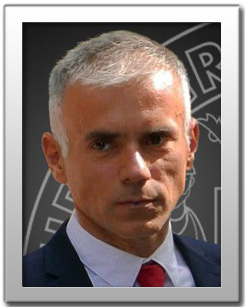 |
||||||||||
| SE.I.2.2 TT.I.I.2 |
Chiara CAMASTRA - CV University of Catanzaro "Magna Graecia" Exploring sex-based brain morphometry differences through Explainable Artificial Intelligence: insights for digital health innovation |
 |
||||||||||
| SE.I.2.3 TT.I.I.3 |
Marina GAROFANO - CV University of Salerno Use of new technologies in physiotherapy in defining the therapeutic exercise dose |
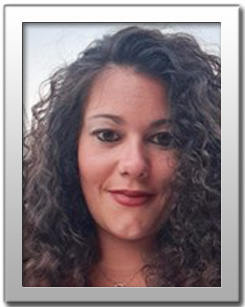 |
||||||||||
| SE.I.2.4 TT.I.I.4 |
Assunta PELAGI - CV University of Catanzaro "Magna Graecia" Predicting and understanding psychological well-being in young adult: new insight for digital health |
 |
||||||||||
| SE.I.2.5 TT.I.I.5 |
Luca BARILLARO - CV University of Catanzaro "Magna Graecia" Scalable deep learning: Applications in medicine |
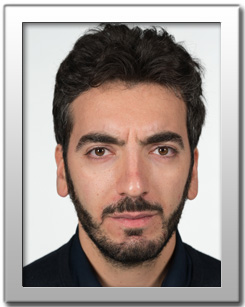 |
||||||||||
| Round table on the Topic | ||||||||||||
| 11:30 - 13:00 Bioengineering for biomedical applications of microfluidics SE.I.3 - TT.II.H |
||||||||||||
| co-organized with University Magna Graecia of Catanzaro | ||||||||||||
| in cooperation with SIRTEPS e SITELF | ||||||||||||
 |
||||||||||||
| Chair: Nicola D'AVANZO, University Magna Graecia of Catanzaro | ||||||||||||
| The session will provide an overwiew about the use of microfluidic techniques, enabling innovative biomedical applications, discussing new methological approaches to supprt the device design, as well. | ||||||||||||
| SE.I.3.1 TT.II.H.1 |
Introductive Keynote Pier Luca MAFFETTONE - CV University of Naples "Federico II" Micro-particle manipulation in microfluidic with viscoelastic liquidis |
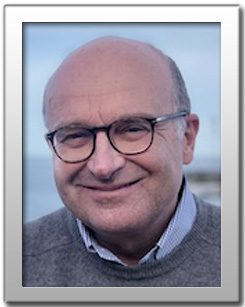 |
||||||||||
| SE.I.3.2 TT.II.H.2 |
Marco BELLOTTI - CV University of Pavia Novel fluid-dynamics variables for the optimization of nanoparticles manufacturing |
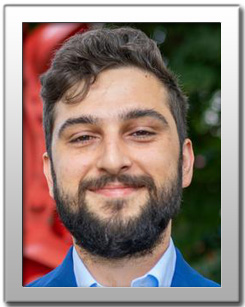 |
||||||||||
| SE.I.3.3 TT.II.H.3 |
Eleonora D'INTINO - CV Sapienza University of Rome Application of microfluidic technology to obtain pH-sensitive niosomes for ATRA delivery in high-grade serous ovarian cancer |
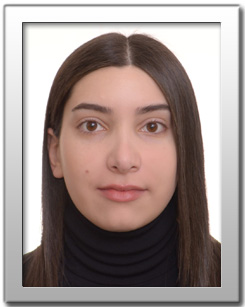 |
||||||||||
| SE.I.3.4 TT.II.H.4 |
Salvatore D'ALESSANDRO - CV University of Rome "La Sapienza" Design of a Microfluidic Open Source 3D Bioprinting for functional tissue engineering |
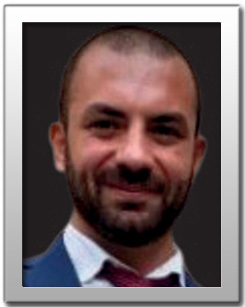 |
||||||||||
| SE.I.3.5 TT.II.H.5 |
Hiba NATSHEH - CV An-Najah National University Modified Release 3D-Printed Capsules Containing a Ketoprofen Self-Nanoemulsifying System for Personalized Medical Application |
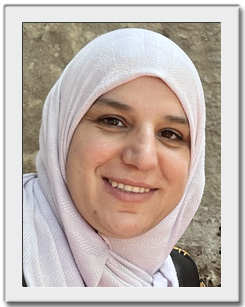 |
||||||||||
| Round table on the Topic | ||||||||||||
| 11:30 - 13:00 Composite materials for electrochemistry SE.I.4 - TT.II.I |
||||||||||||
| Co-organized with iEntrance@ENL Chair: Mauro PASQUALI, Sapienza University of Rome |
||||||||||||
| Cutting-edge renewable energy conversion technologies demand advanced electro- and photoelectrocatalysts, but traditional development methods are slow and time-consuming. High-throughput methodologies facilitate rapid synthesis and screening of material libraries, while operando techniques, such as X-ray absorption spectroscopy, offer real-time insights into catalyst behavior under operational conditions. This innovative approach accelerates the discovery of new materials and deepens our understanding of their performance, propelling the advancement of next-generation energy technologies. | ||||||||||||
| SE.I.4.1 TT.II.I.1 |
Introductive Keynote Raffaello MAZZARO University of Bologna Novel approaches for the development of electro- and photoelectrocatalysts |
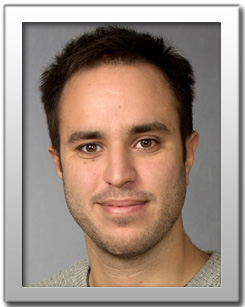 |
||||||||||
| SE.I.4.2 TT.II.I.2 |
Giulia GIANOLA - CV IIT Iron-Nitrogen-Carbon Catalysts by Different Synthesis Approaches for Efficient Oxygen Reduction Reaction in Fuel Cells Applications |
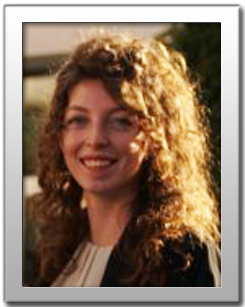 |
||||||||||
| SE.I.4.3 TT.II.I.3 |
Jaimon CHONEDAN JOHNSON - CV CNR-IMM Fabrication of Electrodes using High Surface Area 3D Graphene Substrates |
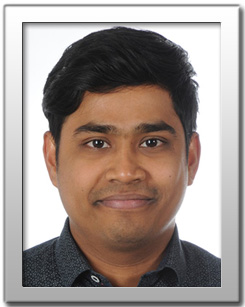 |
||||||||||
| SE.I.4.4 TT.II.I.4 |
Alessia FORTUNATI - CV IIT CO2 electroreduction to CO in a membrane electrode assembly cell configuration for process scaling up |
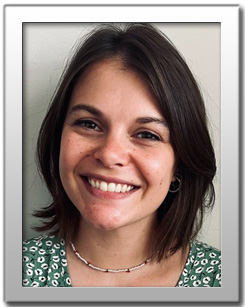 |
||||||||||
| SE.I.4.5 TT.II.I.5 |
Nicolò ROSSETTI - CV University of Padova Dual-Coordinated Nickel Single Atoms Stabilized in a Triazine-thiadiazole Based Organic Polymer for the Oxygen Evolution Reaction |
 |
||||||||||
| Round table on the Topic | ||||||||||||
| 14:00 - 15:30 Nanotherapeutic in unmet clinical need SE.I.5 - TT.III.H |
||||||||||||
| Co-organized with University "G. d'Annunzio" of Chieti- Pescara | ||||||||||||
| in cooperation with SIRTEPS e SITELF | ||||||||||||
 |
||||||||||||
| Chair: Christian CELIA, University "G. d'Annunzio" of Chieti- Pescara | ||||||||||||
| This session addresses the critical need for advancements in nanotherapeutics to tackle diseases with significant unmet clinical needs. Where conventional therapies fail to improve treatment outcomes, nanotherapeutics offer promising solutions by utilizing the unique properties of nanoscale materials, such as controlled release and targeted delivery. The session will highlight current developments and innovations about how these nano-approaches can fill current gaps in clinical care. | ||||||||||||
| SE.I.5.1 TT.III.H.1 | Introductive Keynote Alexandre CECCALDI - CV European Technology Platform for Nanomedicine (ETPN) Charting the Future of Nanomedicine: Opportunities and Skills for Young Innovators in Europe |
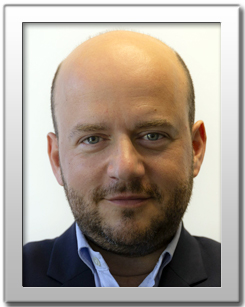 |
||||||||||
| SE.I.5.2 TT.III.H2 | Alessandro NOTO - CV IRCC S Regina Elena National Cancer Institute Self-assembling nanoparticles for miRNA delivery towards precision medicine against melanoma |
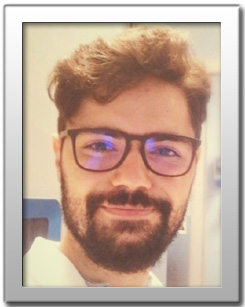 |
||||||||||
| SE.I.5.3 TT.III.H.3 | Salvatore PANZA - CV Università Magna Graecia di Catanzaro Nanomedicines on Multidrug Treatment Strategies for Vitiligo |
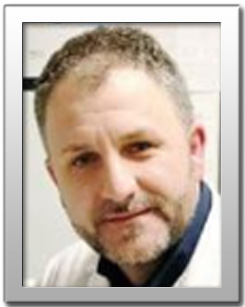 |
||||||||||
| SE.I.5.4 TT.III.H.4 | Giuliana PREVETE - CV CNR-ISB How liposome encapsulation affects antimicrobial and antioxidant properties of Hydroxytyrosol and Hydroxytyrosol oleate |
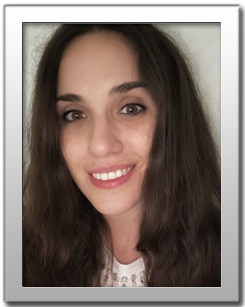 |
||||||||||
| SE.I.5.5 TT.III.H.5 | Gaia ZUCCA - CV University of Pavia Drug delivery system based on pH-responsive nanofibers for the prevention of sexually transmitted infections |
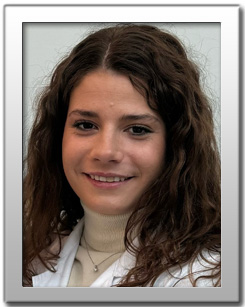 |
||||||||||
| Round table on the Topic | ||||||||||||
| 14:00 - 15:30 2D and Quantum Materials SE.I.6 - TT.III.I |
||||||||||||
| Co-organized with Sapienza University of Rome Chair: Francesca SCARAMUZZO, Sapienza University of Rome |
||||||||||||
| 2D quantum materials represent a cutting-edge class of systems that exhibit unique quantum mechanical properties due to their ultrathin structure, typically consisting of a single layer or a few layers of atoms. Examples include graphene, transition metal dichalcogenides (TMDs), and topological insulators. These materials are characterized by their exceptional electronic, optical, and mechanical properties, which differ significantly from their bulk counterparts. Graphene, for instance, features exceptional electron mobility and mechanical strength, making it promising for applications in flexible electronics, transparent conductive films, and high-speed transistors. TMDs, on the other hand, exhibit tunable bandgaps and strong light-matter interactions, enabling applications in optoelectronics, photodetectors, and quantum devices. This session will focus on the recent advances in the study and characterization of 2D materials and heterostructures, exploiting a variety of experimental and computational techniques to assess the fascinating mechanisms at work in this wide class of compounds. | ||||||||||||
| SE.I.6.1 TT.III.I.1 | Introductive Keynote Paolo POSTORINO - CV Sapienza University of Rome Two-Dimensional Materials: From Theoretical Predictions to Experimental Realizations and Technological Applications |
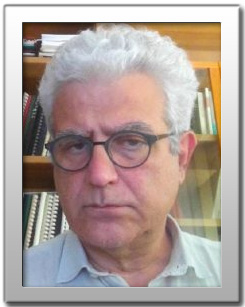 |
||||||||||
| SE.I.6.2 TT.III.I.2 | Alice Margherita FINARDI - CV University of Milan Time-resolved Raman spectroscopy on bulk and monolayer MoS2 |
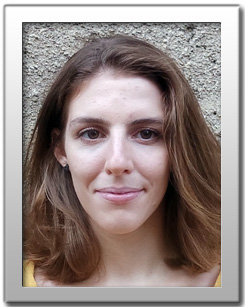 |
||||||||||
| SE.I.6.3 TT.III.I.3 | Mattia BECCACECI - CV Sapienza University of Rome Wavevector-resolved photonic entanglement from radiative cascades |
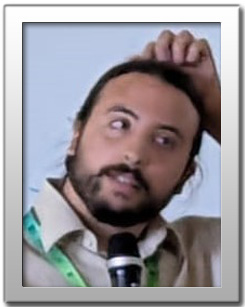 |
||||||||||
| SE.I.6.4 TT.III.I.4 | Michele PERLANGELI - CV University of Trieste Time Resolved photoluminescence spectra of WS2 and MoS2 at high excitation fluence |
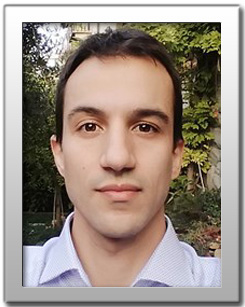 |
||||||||||
| SE.I.6.5 TT.III.I.5 | Giuseppe RONCO - CV Sapienza University of Rome Exciton redistribution in 2D WSe2 via external strain field for positioned quantum emitters with stable magnetic response |
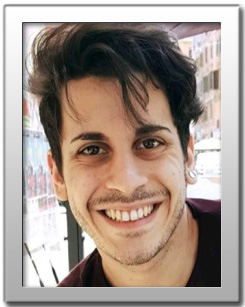 |
||||||||||
| Round table on the Topic | ||||||||||||
| 16:00 - 17:30 Nanotechnologies for precision medicine SE.I.7 - TT.IV.H |
||||||||||||
| Co-organized with University Magna Graecia of Catanzaro | ||||||||||||
| in cooperation with SIRTEPS e SITELF | ||||||||||||
 |
||||||||||||
| Chair: Maria Chiara CRISTIANO, University Magna Graecia of Catanzaro | ||||||||||||
| The topic ""Nanotechnologies for precision medicine"" explores the integration of nanotechnologies in the field of personalized medical care. It delves into how nanoscale materials and techniques are harnessed to reshape diagnostics, therapies, and treatments to tailor them to each patient's unique characteristics. By harnessing the distinctive properties of nanomaterials, this field is paving the way for more targeted and effective interventions, ranging from disease detection and drug delivery to innovative therapies such as gene editing and RNA interference. However, this convergence of nanotechnology and medicine also presents challenges, such as regulatory considerations and toxicity issues, that need to be addressed for sustainable implementation. Ultimately, the evolving landscape of nanotechnology in precision medicine promises a future in which healthcare is fine-tuned to individual profiles, ushering in a new era of personalized and improved medical outcomes. | ||||||||||||
| SE.I.7.1 TT.IV.H.1 |
Introductive Keynote Marco MONOPOLI - CV Royal College of Surgeons, Ireland | European Technology Platform on Nanomedicine (ETPN Association) Understanding the nanomaterial interaction with biomolecules, a journey from safety to applications in modern medicine |
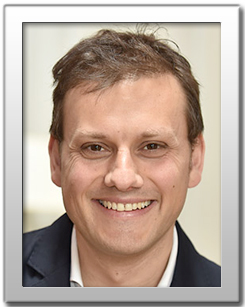 |
||||||||||
| SE.I.7.2 TT.IV.H.2 |
Ruchi VYAS - CV University of Rajasthan Magnetic Nanobeads based Lateral flow assay for early detection of traumatic brain injury |
 |
||||||||||
| SE.I.7.3 TT.IV.H.3 |
Lorenzo SARDELLI - CV University of Turin Mucosomes: bioinspired nanoparticles of glycosylated mucins to re-think mucosal drug delivery |
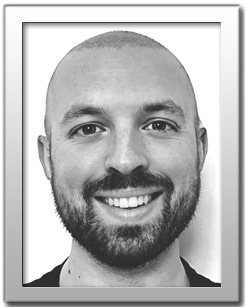 |
||||||||||
| SE.I.7.4 TT.IV.H.4 |
Alessandro PARADISI - CV University of Modena and Reggio-Emilia Carbon Nanotubes/Protein Hybrids for Healthcare Biosensing Applications |
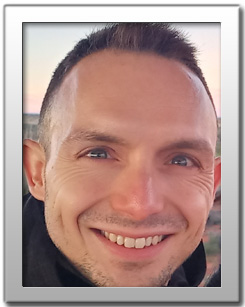 |
||||||||||
| SE.I.7.5 TT.IV.H.5 |
Miriam CAVIGLIA - CV ISS Copper complexes with biological active molecule amantadine as potential anticancer and antiviral agents |
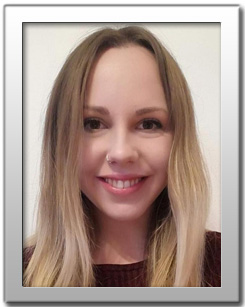 |
||||||||||
| Round table on the Topic | ||||||||||||
| 17:30 - 20:00 Cocktail & Social |
||||||||||||
| ROOM 7 | ||||||||||||
| September 12 | ||||||||||||
| 09:00 - 10:30 Regenerative medicine: current applications, challenges and future directions SE.I.8- TT.V.H |
||||||||||||
| co-organized with University Magna Graecia of Catanzaro | ||||||||||||
| in cooperation with SIRTEPS e SITELF | ||||||||||||
 |
||||||||||||
| Chair: Francesca MEGIORNI, University "Sapienza" of Rome | ||||||||||||
| Regenerative medicine represents a beacon of hope in modern healthcare, promising solutions for degenerative diseases and tissue damage. This session delves into the multifaceted landscape of regenerative medicine, charting its present achievements, grappling with existing obstacles, and envisioning the bold trajectories that lie ahead. Current applications of regenerative medicine span a diverse spectrum, from stem cell therapies to tissue-engineered constructs fostering organ regeneration. These breakthroughs underscore the potential to mend the human body at its most fundamental level, encouraging natural healing processes to restore vitality. However, the path to full realization is not without hurdles. The challenges of immune rejection, ethical considerations, and ensuring safe, standardized protocols demand careful exploration. Looking forward, regenerative medicine holds the promise of tailored treatments, personalized to an individual's genetic makeup and medical history. Innovations such as organ printing, gene editing, and bioactive scaffolds are poised to redefine healthcare paradigms, bridging the gap between science fiction and tangible medical solutions. | ||||||||||||
| SE.I.8.1 TT.V.H.1 |
Introductive Keynote Calogero FIORICA - CV University of Palermo, Italy Development and characterization of polymeric biomaterilas for regenerative medicine application |
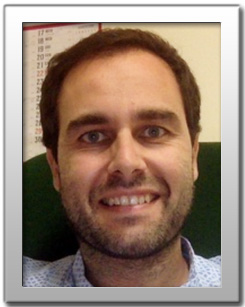 |
||||||||||
| SE.I.8.2 TT.V.H.2 |
Martine TARSITANO - CV University Magna Graecia di Catanzaro & University of Technology Sydney Chlorella-enriched hydrogels exhibit a protective role against myocardial damage by reducing reactive oxygen species in an in vitro model of ischemia/reperfusion using cardiac spheroids |
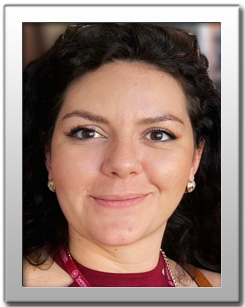 |
||||||||||
| SE.I.8.3 TT.V.H.3 |
Giulia GERINI - CV Sapienza University of Rome, Italy 3D culturing as a promising strategy for the production of enhanced adipose stem cell-derived secretome for clinical applications |
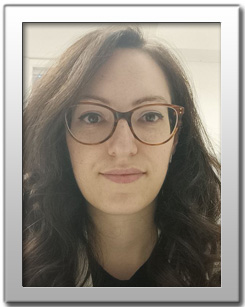 |
||||||||||
| SE.I.8.4 TT.V.H.4 |
Fabrizio CECE - CV Sapienza University of Rome, Italy Nanostring-based analysis of transcriptional metabolic signatures in Adipose derived Stem Cells treated with epigenetic drugs during osteogenic differentiation |
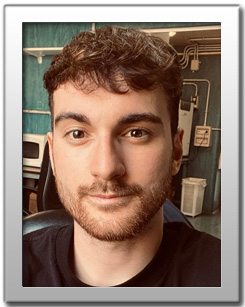 |
||||||||||
| SE.I.8.5 TT.V.H.5 |
Benedetta DI CHIARA STANCA - CV University of Salento Revolutionizing Dental Implants: The Game-Changing Impact of Concentrated Growth Factors |
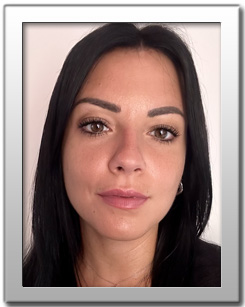 |
||||||||||
| Round table on the Topic | ||||||||||||
| 09:00 - 10:30 Structural and Surface properties of nanomaterials SE.I.9 - TT.V.I |
||||||||||||
| Co-organized with Sapienza University of Rome Chair: Iolanda FRANCOLINI, Sapienza University of Rome |
||||||||||||
| This session is focused on advanced methods used to analyze the structure and surface properties of nanomaterials as well as on the chemical modifications of nanomaterial surfaces and their impact on reactivity, stability, and interaction with other substances. Insight into how the unique structural and surface properties of nanomaterials contribute to their use in different fields of applications will be given. | ||||||||||||
| SE.I.9.1 TT.V.1 |
Introductive Keynote Giuseppe VITIELLO - CV University of Naples "Federico II" Amphiphiles functionalized colloidal metal-oxide nanoparticles: from design to technological applications |
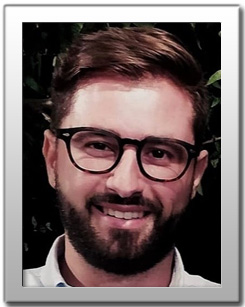 |
||||||||||
| SE.I.9.2 TT.V.2 |
Lorenzo Augusto ROCCHI - CV Sapienza University of Rome Thermal Characterization of polysulfone nanoparticles: a study of glass transition and devitrification kinetics |
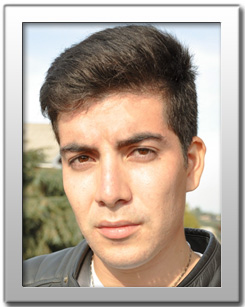 |
||||||||||
| SE.I.9.3 TT.V.3 |
Sara CERRA - CV Sapienza Universisty of Rome Hydrophobic gold nanoparticles coupled with fluorescent dyes: a smart tool for optoelectronic applications |
 |
||||||||||
| SE.I.9.4 TT.V.4 |
Valerio LA GAMBINA - CV Sapienza University of Rome CTAB and a thermoresponsive bile acid derivative form catanionic tubules: sorting out an unexpected composition ratio |
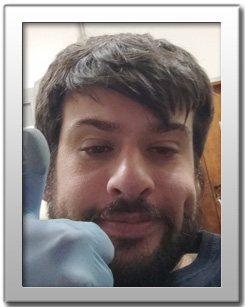 |
||||||||||
| SE.I.9.5 TT.V.5 |
Emanuele BOSCO Sapienza University of Rome α-Sn nanostructures with ultra-narrow direct bandgap on Silicon for THz applications |
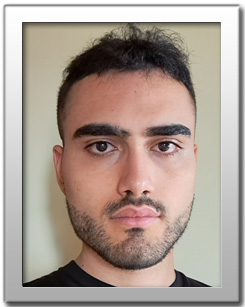 |
||||||||||
| Round table on the Topic | ||||||||||||
| 11:30 - 13:00 Hybrid and Composite nanomaterials for energy SE.I.10 - TT.VI.H |
||||||||||||
| in cooperation with | ||||||||||||
 |
||||||||||||
| Chair: Marino LAVORGNA, CNR-IPCB | ||||||||||||
| The session will explore the cutting-edge advancements and applications of nanomaterials in the energy sector. This session aims to highlight the unique properties and potential of hybrid and composite nanomaterials in addressing the global energy challenges. The session will cover a wide range of topics, including the development of novel nanocomposites for energy storage, conversion, and harvesting applications. Attendees will gain insights into the challenges and opportunities in the fabrication and scalability of these advanced materials. Discussions will also address the environmental impact and sustainability of nanomaterial-based energy solutions. | ||||||||||||
| SE.I.10.1 TT.VI.H.1 |
Introductive Keynote Pietro CATALDI - CV IIT Multifunctional and Sustainable hybrid and nanocomposite materials for electronics, sensors and energy |
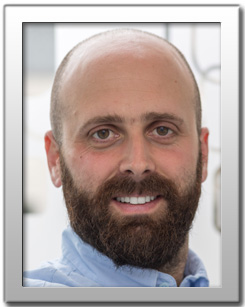 |
||||||||||
| SE.I.10.2 TT.VI.H.2 |
Pierluigi LASALA - CV University of Bari "Aldo Moro" Nanoparticles modified biohybrid photoanode for enhancing light-to-electricity conversion |
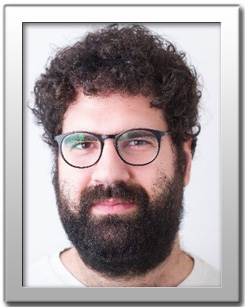 |
||||||||||
| SE.I.10.3 TT.VI.H.3 |
Roberto FIORENZA - CV University of Catania Solar-promoted photo-thermal CO2 methanation on SiC/hydrotalcites materials |
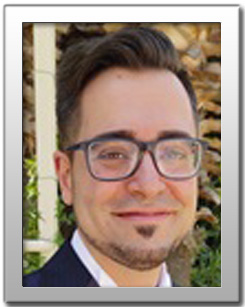 |
||||||||||
| SE.I.10.4 TT.VI.H.4 |
Pencheng YANG - CV CNR-IPCB Innovation nanocomposites-based on large-size defect-free monolayers of MXene with enhanced hydrogen barrier properties |
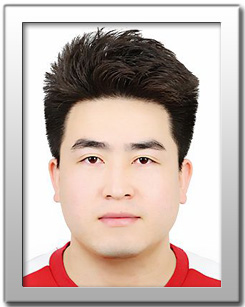 |
||||||||||
| SE.I.10.5 TT.VI.H.5 |
Matteo MASTELLONE - CV CNR-ISM Tailoring optical, photothermal and electronic properties of semiconductors and dielectrics by Laser-Induced Surface Nanotexturing |
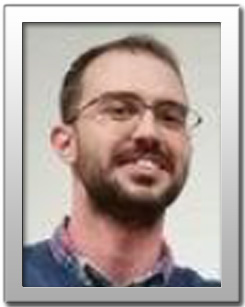 |
||||||||||
| Round table on the Topic | ||||||||||||
| 11:30 - 13:00 Preclinical, Clinical and Industrial Transfer SE.I.11 - TT.VI.I |
||||||||||||
| co-organized with University Magna Graecia of Catanzaro | ||||||||||||
| in cooperation with SIRTEPS e SITELF | ||||||||||||
 |
||||||||||||
| Chair: Amedeo AMEDEI, University of Florence | ||||||||||||
| This session delves into the dynamic landscape of advanced models for precision medicine, illuminating their role in reshaping the future of healthcare. With a focus on individualized treatment approaches, these models integrate cutting-edge technologies to deliver tailored solutions that revolutionize patient care. Precision medicine harnesses genetic, molecular, and clinical data to customize treatments for individuals. As the horizon unfurls, advanced models hold transformative potential. From rare diseases to chronic conditions, precision medicine pioneers tailored treatments, improving patient outcomes and minimizing adverse effects. This evolving paradigm not only redefines patient care but also drives innovations across healthcare systems. This session portrays the dynamic journey of advanced models for precision medicine, spotlighting their ability to reshape medical practice, foster breakthroughs, and lead us into an era of truly individualized healthcare. | ||||||||||||
| SE.I.11.1 TT.VI.I.1 |
Introductive Keynote Alice GUALERZI - CV IRCCS "S. Maria Nascente" Fondazione Don Carlo Gnocchi Interdisciplinary Aspects in Nanomedicine |
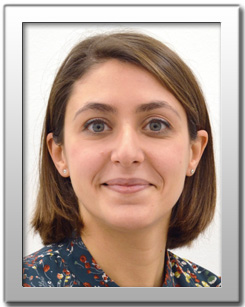 |
||||||||||
| SE.I.11.2 TT.VI.I.2 |
Aurora MANGOLINI - CV IRCCS "S. Maria Nascente" Fondazione Don Carlo Gnocchi Extracellular Vesicles as biomarkers of the regenerative mechanisms induced by rehabilitation after heart transplantation |
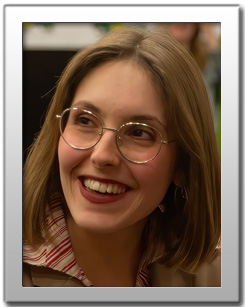 |
||||||||||
| SE.I.11.3 TT.VI.I.3 |
Gaia FATTORINI - CV Sapienza University of Rome Cell imaging approaches to identify prognostic and predictive biomarkers in Hereditary spastic paraplegias |
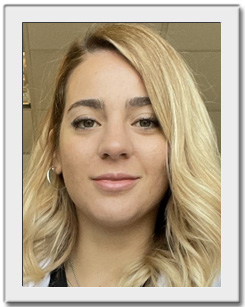 |
||||||||||
| SE.I.11.4 TT.VI.I.4 |
Francesco SPEDICATO - CV University of Salento Biocompatible HA-Si Scaffolds with CGF: A Promising Approach for Osteogenic Differentiation |
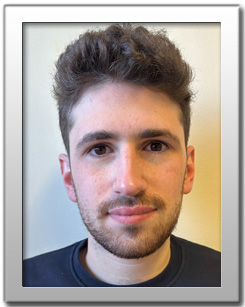 |
||||||||||
| SE.I.11.5 TT.VI.I.5 |
Stefania VILLANI - CV University of Salento Chracterization of bacterial cellulose-neem-hypericum oil wound care paste in vitro and in Galleria mellonella in vivo model |
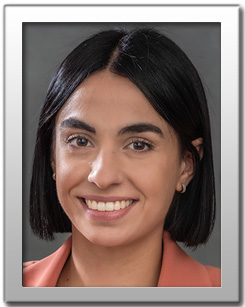 |
||||||||||
| Round table on the Topic | ||||||||||||
| 14:00 - 15:30 Photochemistry and Photophysics in energy conversion SE.I.12 - TT.VII.H |
||||||||||||
| in cooperation with | ||||||||||||
 |
||||||||||||
| Chair: Raffaello MAZZARO, University of Bologna | ||||||||||||
| Photochemistry and photophysics play a crucial role in both natural and technological processes, offering a promising avenue for addressing the energy and climate challenges that our society is facing today. Light-induced processes can occur in either homogeneous or heterogeneous phase and can be exploited to (1) convert solar energy into chemical or electrical energy, (2) perform organic synthesis that cannot be achieved by thermal activation, and (3) remedy pollution. This session will delve into the fundamental principles and applications of photochemistry and photophysics in energy conversion, exploring their significance in addressing energy and environmental concerns with a focus on efficiency assessment, thermodynamic and spectroscopic aspects, and experimental photoreaction characterization. A detailed understanding of the photoinduced processes, coupled with in-depth material characterization, should lead to the development of a common language and shared procedures, which are essential for the advancement of research in this field. | ||||||||||||
| SE.I.12.1 TT.VII.H.1 |
Introductive Keynote Giacomo BERGAMINI - CV University of Bologna Photoactive materials and techniques for energy conversion |
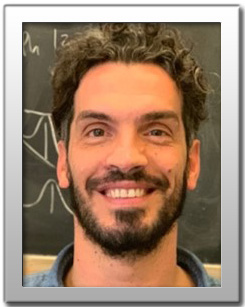 |
||||||||||
| SE.I.12.2 TT.VII.H.2 |
Soraia FLAMMINI - CV CNR-ISOF Multifunctional photoelectroactive oligothiophenes based on benzothiadiazole, thienopyrazine, and thienothiadiazole for optoelectronics and biology |
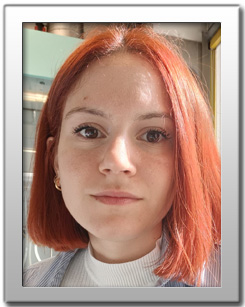 |
||||||||||
| SE.I.12.3 TT.VII.H.3 |
Mengjiao WANG - CV Polytechnic of Turin Surface chemistry modified by facile liquid phase exfoliation on 2D layered BiOI as photoanode for enhanced oxygen evolution |
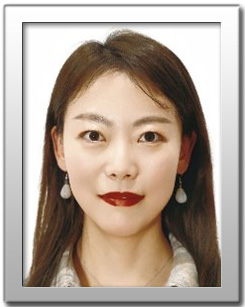 |
||||||||||
| SE.I.12.4 TT.VII.H.4 |
Niloofar HAGHSHENAS - CV University of Milan Cutting-Edge Perovskite Photocatalysts synthesized by Ultrasound: A Game-Changer in Air Pollution Control |
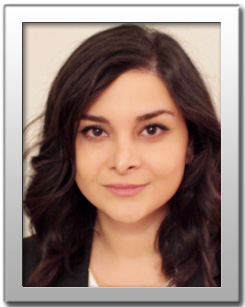 |
||||||||||
| SE.I.12.5 TT.VII.H.5 |
Tommaso GIOVANNINI - CV University of Rome Tor Vergata Energy Conversion in Plasmonic Materials: an Atomistic Perspective |
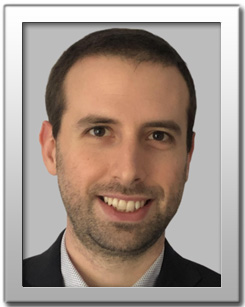 |
||||||||||
| Round table on the Topic | ||||||||||||
| 14:00 - 15:30 Nanomaterials characterization for biomedicine SE.I.13 - TT.VII.I |
||||||||||||
| in cooperation with University Magna Graecia of Catanzaro | ||||||||||||
| in cooperation with SIRTEPS e SITELF | ||||||||||||
 |
||||||||||||
| Chair: Antonia MANCUSO, University Magna Graecia of Catanzaro | ||||||||||||
| The session will delve into the advanced techniques and methodologies essential for the precise characterization of nanomaterials in biomedical applications. As nanomaterials play an increasingly vital role in areas such as drug delivery, diagnostics, and therapeutic development, understanding their physicochemical properties, biocompatibility, and safety profiles is crucial. This session will cover the latest innovations in analytical tools and assays, addressing the challenges of characterizing complex nanomaterials and ensuring their efficacy and safety in clinical settings. Attendees will gain valuable insights into how accurate characterization drives the advancement of nanomedicine. | ||||||||||||
| SE.I.13.1 TT.VII.I.1 |
Introductive Keynote Luigi CALZOLAI - CV European Commission, Joint Research Center (JRC), ISPRA, Italy Characterization and preclinical testing of nanomedicines |
 |
||||||||||
| SE.I.13.2 TT.VII.I.2 |
Anastasia GAGANINA Sapienza University of Rome Detection of anti-SARS CoV-2 antibodies in human serum by means of Bloch surface waves on 1D photonic crystal biochips |
 |
||||||||||
| SE.I.13.3 TT.VII.I.3 |
Eleonora D'ALESSANDRO - CV Campus Bio-Medico University of Rome Silica-based nanomaterials: design and optimization of in-batch and in-flow processes |
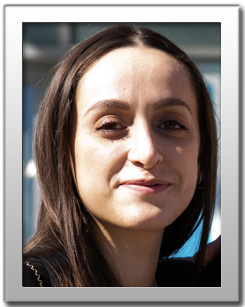 |
||||||||||
| SE.I.13.4 TT.VII.I.4 |
Marco RANALDI - CV Roma Tre University Preliminary NMR characterization of gold nanorods developed for drug delivery systems in Glioblastoma cells |
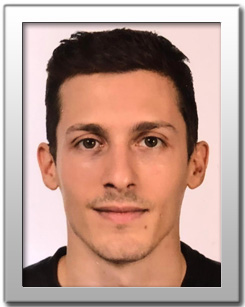 |
||||||||||
| SE.I.13.5 TT.VII.I.5 |
Elena OLIVIERI Roma Tre University Fluorescently labelled gold nanoparticles as promising carrier for multiple sclerosis drugs |
 |
||||||||||
| Round table on the Topic | ||||||||||||
| 16:00 - 17:30 Nanomaterials for catalytic processes SE.I.14 - TT.VIII.H |
||||||||||||
| in cooperation with | ||||||||||||
 |
||||||||||||
| Chair: Gianluca LANDI, CNR-STEMS | ||||||||||||
| The session "Nanomaterials for Catalytic Processes" will explore the transformative impact of nanomaterials on the field of catalysis, highlighting their unique properties and applications in various catalytic processes. Attendees will gain insights into the mechanisms by which nanomaterials facilitate catalytic processes, including their surface properties, electronic structures, and interaction with reactants. The session will also delve into the practical applications of nanocatalysts in areas such as chemical synthesis, environmental remediation, energy conversion, and industrial processes. | ||||||||||||
| SE.I.14.1 TT.VIII.H.1 |
Introductive Keynote Giuseppina LUCIANI - CV University of Naples "Federico II" Nanocatalysts for sustainable energy and environment |
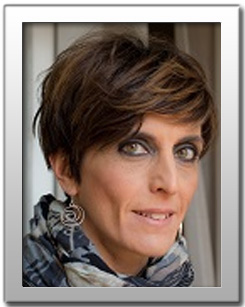 |
||||||||||
| SE.I.14.2 TT.VIII.H.2 |
Sadaf YASMEEN - CV University of Rome Tor Vergata Synthesis and Characterization of highly efficient ZnO-Sm2O3 Photocatalyst for the photocatalytic degradation of bentazon herbicide |
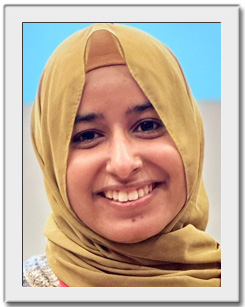 |
||||||||||
| SE.I.14.3 TT.VIII.H.3 |
Virginia VENEZIA - CV University of Naples Federico II Innovative Lignin-TiO2 Nanocomposites: Advancing Redox Materials and sustainable wastewater decontamination |
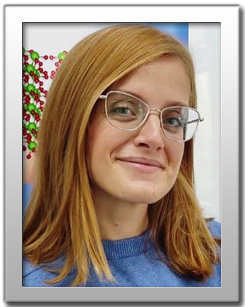 |
||||||||||
| SE.I.14.4 TT.VIII.H.4 |
Stefano SCOGNAMIGLIO Polytechnic of Turin Fe-Cu(-Ce)/HZSM-5 catalysts for simultaneous methanol and DME synthesis |
 |
||||||||||
| SE.I.14.5 TT.VIII.H.5 |
Alberto MARTIS - CV IIT From spirulina to nanoinnovation, fluorescent phycobilins to make nano catalyst |
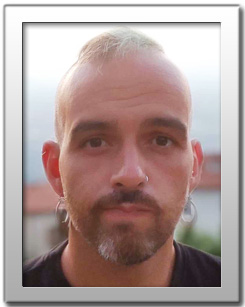 |
||||||||||
| Round table on the Topic | ||||||||||||
| 16:00 - 17:30 Exploring the Future: Advances in 3D Bioprinting for Tissue Engineering and Regenerative Medicine SE.I.15 - TT.VIII.I |
||||||||||||
| co-organized with University Magna Graecia of Catanzaro | ||||||||||||
| in cooperation with SIRTEPS e SITELF | ||||||||||||
 |
||||||||||||
| Chair: Carmine GENTILE, University of Technology, Sydney | ||||||||||||
| 3D bioprinting offers a versatile approach to creating complex tissue structures with precise architecture, supporting the development of personalized treatments and enhancing the repair and regeneration of damaged tissues. With applications ranging from tissue engineering and regenerative medicine to disease modeling and drug testing, the session will highlight recent breakthroughs and discuss their potential to revolutionize biomedical research and clinical practice. By exploring these cutting-edge developments, the session aims to showcase the transformative potential of 3D bioprinting to shape the future of medicine and improve patient outcomes in several biomedical fields. | ||||||||||||
| SE.I.15.1 TT.VIII.I.1 |
Introductive Keynote Francesco PASQUALINI - CV University of Pavia New Engineering Tools to Study Cell-ECM Interactions in-vitro |
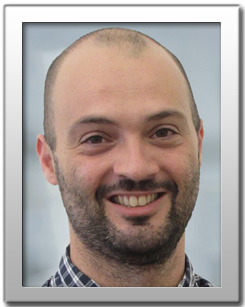 |
||||||||||
| SE.I.15.2 TT.VIII.I.2 |
Klajdi GEGA - CV Sapienza University of Rome, Italy 3d Bioprintable dystrogel faithfully recapitulates the characteristics of the dystrophic cardiac extracellular environment |
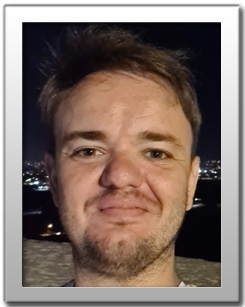 |
||||||||||
| SE.I.15.3 TT.VIII.I.3 |
Laura VETTORI - CV University of Technology Sydney, Ultimo, NSW 2007, Australia Silk fibroin modulates the mechanical properties of alginate-gelatin hydrogels and controls cardiac cell contractile function in cardiac bioinks |
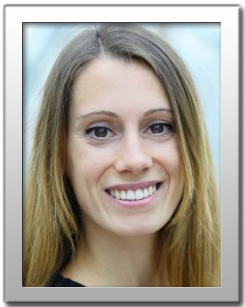 |
||||||||||
| SE.I.15.4 TT.VIII.I.4 |
Michele MARINO - CV University of Rome "Tor Vergata", Italy Advanced Simulations of Bio-Ink Extrusion Dynamics |
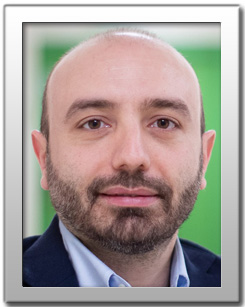 |
||||||||||
| SE.I.15.5 TT.VIII.I.5 |
Lucia IAFRATE - CV Italian Institute of Technology (IIT), Italy Patterning decellularised human bone and vascular allograft bioinks via 3D bioprinting for skeletal tissue engineering |
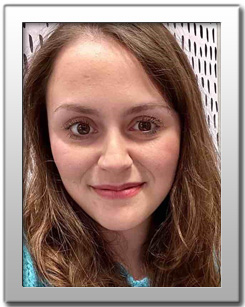 |
||||||||||
| Round table on the Topic | ||||||||||||
| 17:30 - 20:00 Cocktail & Social |
||||||||||||
| ROOM 7 | ||||||||||||
| September 13 | ||||||||||||
| 09:00 - 10:30 Self-assembly and nanostructured materials SE.I.16 - TT.IX.H |
||||||||||||
| Co-organized with Sapienza University of Rome Chair: Iolanda FRANCOLINI, Sapienza University of Rome |
||||||||||||
| This session will cover the process of self-assembly, emphasizing the fundamental principles driving self-assembly at the molecular and atomic levels. Innovations in the fabrication of nanostructured materials using self-assembly techniques by the exploration of different types of nanomaterials, such as nanoparticles, nanowires, and nanosheets, and their tailored properties will be highlighed. | ||||||||||||
| SE.I.16.1 TT.IX.H.1 |
Introductive Keynote Stefano CINTI - CV University of Naples "Federico II" Smart/nano materials for enhancing diagnostics |
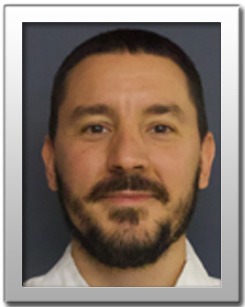 |
||||||||||
| SE.I.16.2 TT.IX.H.2 |
Sara ALFANO - CV Sapienza University of Rome Polyhydroxyalkanoates nanocarriers: a platform for hydrophobic bioactive delivery |
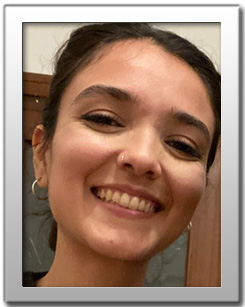 |
||||||||||
| SE.I.16.3 TT.IX.H.3 |
Asma MUNIR - CV University of Bologna Design and Applications of Hybrid Silver Nanoparticles Exploiting Natural Sources |
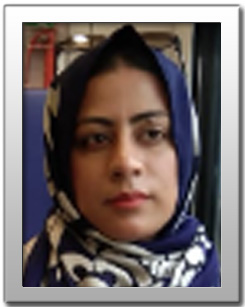 |
||||||||||
| SE.I.16.4 TT.IX.H.4 |
Benedetta BRUGNOLI - CV Sapienza University of Rome Rational Design of Self-assembled Poly-L-Lactide Nanosystems for Drug Delivery |
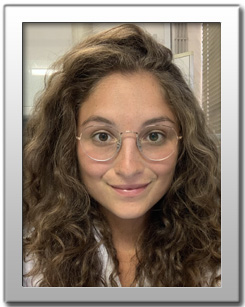 |
||||||||||
| SE.I.16.5 TT.IX.H.5 |
Valeria D'ANNIBALE - CV Sapienza University of Rome A novel porphyrin-peptide derivative has been synthesized by a solid-phase peptide synthesis (SPPS) protocol, with the aim of defining a novel antimicrobial amphiphile |
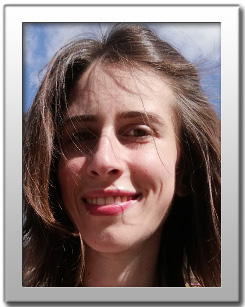 |
||||||||||
| Round table on the Topic | ||||||||||||
| 09:00 - 10:30 Biomaterials SE.I.17 - TT.IX.I |
||||||||||||
| co-organized with University Magna Graecia of Catanzaro | ||||||||||||
| in cooperation with SIRTEPS e SITELF | ||||||||||||
 |
||||||||||||
| Chair: Massimo LA DEDA, University of Calabria | ||||||||||||
| Biomaterials, encompassing both natural and synthetic origins, are making remarkable strides in the biomedical field through advancements in their modification and functionalization. These developments include the engineering of materials to enhance their properties, such as increased biocompatibility, controlled degradation rates, and specific interactions with biological tissues. Recent innovations focus on modifying biomaterials at the molecular level to improve their performance, including the incorporation of bioactive molecules that promote tissue regeneration and the application of surface modifications to enhance cellular adhesion and integration. Additionally, functionalization techniques are enabling the creation of responsive biomaterials that react to physiological stimuli, offering exciting possibilities for targeted drug delivery and personalized medical treatments. This session provides new insights about how these advancements are pushing the boundaries of medical technology, leading to more effective, personalized, and durable solutions in healthcare | ||||||||||||
| SE.I.17.1 TT.IX.I.1 |
Introductive Keynote Francesco PUOCI - CV University of Calabria New perspectives of drug targeting by molecular imprinting |
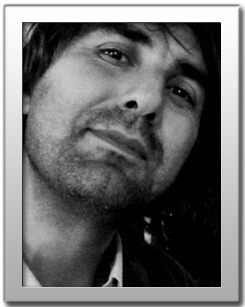 |
||||||||||
| SE.I.17.2 TT.IX.I.2 |
Marco DATTILO - CV University of Calabria, Italy Alginate and Pectin-Based Molecularly imprinted polymers for targeted therapeutic intervention in Celiac Disease in Celiac Disease |
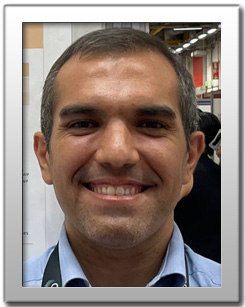 |
||||||||||
| SE.I.17.3 TT.IX.I.3 |
Salma BOUSSELMI Sapienza University of Rome, Italy Enhancing neovascularization post-myocardial infarction through injectable hydrogel functionalized with endothelial-derived EVs |
 |
||||||||||
| SE.I.17.4 TT.IX.I.4 |
Matteo GALBIATI CNR-ITB Boosted skin regeneration through gelma-based hydrogel functionalized with Fibroblast-derived extracellular vesicles |
 |
||||||||||
| SE.I.17.5 TT.IX.I.5 |
Marta POLLINI - CV University of Pavia Electroactive nanofibrous scaffolds enhancing skin wound regeneration |
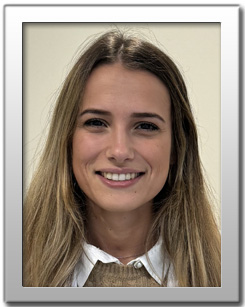 |
||||||||||
| Round table on the Topic | ||||||||||||
| 11:30 - 13:00 Optical and Acoustic trapping SE.I.18 - TT.X.H |
||||||||||||
| co-organized with Mediterranean University of Reggio Calabria Chairs: Giuliana FAGGIO & Giacomo MESSINA, Mediterranean University of Reggio Calabria |
||||||||||||
| Contactless manipulation of particles has many important applications in different fields such as nanoscience, biology, electronic industrial processes, container-less transportation. In this session, we will discuss about trapping and manipulation of particles by using optical and acoustic forces, which allow the study of samples with size ranging from tens of nanometers to millimeters. We will highlight the pros and cons of each technique and discuss their possible integration. In addition, we will show some recent results obtained in metamaterial science, environmental pollution monitoring and astrophysics. | ||||||||||||
| SE.I.18.1 TT.X.H.1 |
Introductive Keynote Maria Grazia DONATO - CV CNR- IPFC Optical and Acoustic trapping for characterization of materials |
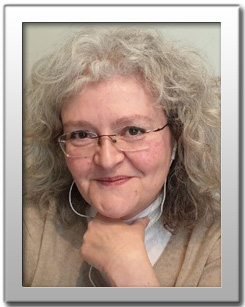 |
||||||||||
| SE.I.18.2 TT.X.H.2 |
Stefano FERRETTI - CV University of Naples Contamination-free manipulation of extraterrestrial dust particles using acoustic tweezers |
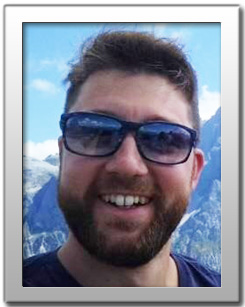 |
||||||||||
| SE.I.18.3 TT.X.H.3 |
Sonia MARRARA University of Messina Optical calibration of acoustic tweezers |
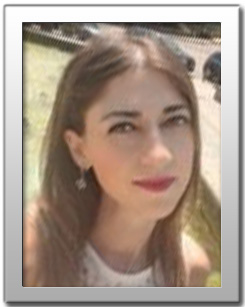 |
||||||||||
| SE.I.18.4 TT.X.H.4 |
Dante Maria ACETI - CV University of Calabria Light-induced particle repulsion from epsilon near-zero thin film |
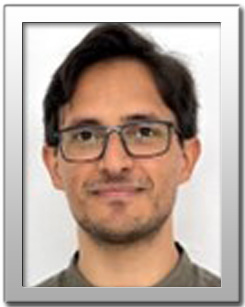 |
||||||||||
| SE.I.18.5 TT.X.H.5 |
Enrico TARTARI École Polytechnique Fédérale de Lausanne Photonic crystal cavities as real-time sensors for single bacteria-antimicrobial interaction |
 |
||||||||||
| Round table on the Topic | ||||||||||||
| 11:30 - 13:00 Gene and Biotech Delivery SE.I.19 - TT.X.I |
||||||||||||
| co-organized with University Magna Graecia of Catanzaro | ||||||||||||
| in cooperation with SIRTEPS e SITELF | ||||||||||||
 |
||||||||||||
| Chair: Massimo FRESTA, University Magna Graecia of Catanzaro | ||||||||||||
| The "Gene and Biotech Delivery" section of the conference explores cutting-edge advancements in the methods and technologies used to deliver genetic and biotechnological materials for therapeutic purposes. Enhancing the accuracy, efficacy, and safety of gene delivery systems is the main goal of recent advancements in this field. These advancements include novel vector designs, such as viral and non-viral carriers, which enable efficient and targeted gene transfer. The creation of advanced delivery systems that enhance the stability and release profiles of therapeutic agents is another advancement that has led to the development of more potent treatments for cancer, genetic disorders, and other diseases. These technological advancements are changing the field of biotechnology and gene therapy and opening the door to more targeted and effective interventions in contemporary medicine. | ||||||||||||
| SE.I.19.1 TT.X.I.1 |
Introductive Keynote Fabiana QUAGLIA - CV University of Naples "Federico II" From Innovation to Application: Non-Viral Approaches for RNA Delivery |
 |
||||||||||
| SE.I.19.2 TT.X.I.2 |
Francesca BUFALIERI Sapienza University of Rome, Italy MEX3A/RIG-I axis as a new therapeutic option for the treatment of glioblastoma |
 |
||||||||||
| SE.I.19.3 TT.X.I.3 |
Martina VINCENZI - CV University of Rome "La Sapienza" Genetic engineering of probiotics: a new pharmacological tool for inflammatory and obesity-linked disorders |
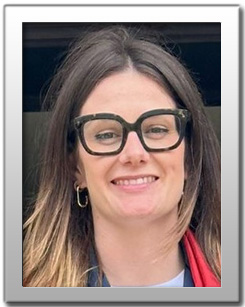 |
||||||||||
| SE.I.19.4 TT.X.I.4 |
Teresa FERRILLO - CV University of Naples “Federico II” On the role of PEG-Lipids in the development of Lipid nanoparticles for siRNA delivery |
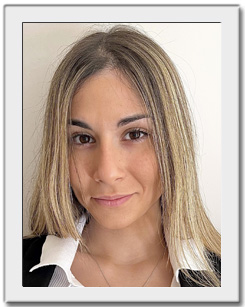 |
||||||||||
| SE.I.19.5 TT.X.I.5 |
Virgilio PICCOLO - CV University of Naples “Federico II” Innovative and smart functionalisable polymeric Nanoparticles for the delivery of Nucleic Acids and Chemotherapeutic in combination for tumor solid treatment |
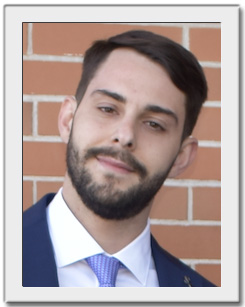 |
||||||||||
| Round table on the Topic | ||||||||||||
| 14:00 - 15:30 CO2 valorization and Hydrogen Technologies for a Sustainable Future SE.I.20 - TT.XI.H |
||||||||||||
| o-organized with Polytechnic University of Turin Chair: Angelica CHIODONI, IIT |
||||||||||||
| As climate challenges become more pressing, it’s crucial to find solutions that reduce our reliance on fossil fuels for generating electricity and producing chemicals. Electrochemical methods offer a promising pathway, especially in key areas such as CO2 reduction to create valuable products, electrolyzers for hydrogen production, and fuel cells that convert hydrogen's chemical energy into electricity. This symposium is dedicated to showcasing innovative research by young scientists who are pushing the boundaries of these critical areas. The symposium will focus on recent advancements in hydrogen technologies, exploring breakthroughs in production and utilization. Key topics will include developments in electrolyzers and fuel cells, which are essential for facilitating the transition to a more sustainable energy system. Additionally, the symposium will cover the electrochemical processes involved in CO2 valorization, highlighting novel methods for converting CO2 into valuable products. Emphasis will be placed on the development of high-performance electrocatalysts, which are crucial for enhancing the efficiency and effectiveness of these processes. Furthermore, the symposium will provide a comprehensive examination of the entire process, from the synthesis of materials and reaction mechanisms to the realization of functional cells. Designed to offer a platform for emerging researchers, the symposium provides an opportunity for them to present their pioneering work and engage in discussions with established experts. This interactive environment aims to foster interdisciplinary collaboration, stimulate new ideas, and support the advancement of sustainable energy solutions. | ||||||||||||
| SE.I.20.1 TT.XI.H.1 |
Introductive Keynote Juqin ZENG - CV Polytechnic University of Turin CO2 and H2 technologies for clean energy transition |
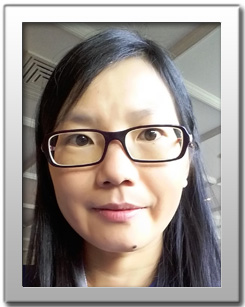 |
||||||||||
| SE.I.20.2 TT.XI.H.2 |
Giacomo SPISNI - CV Polytechnic University of Turin Ultrasonic spray coated nanostructured layer to enhance anodic performance in Bio-Electrochemical Systems |
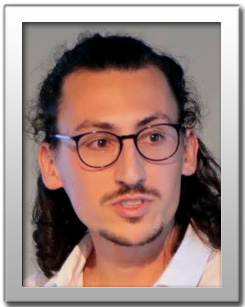 |
||||||||||
| SE.I.20.3 TT.XI.H.3 |
Huang LAN - CV IIT, Turin Green synthesis of Cu-based catalyst for selective CO2 electroreduction |
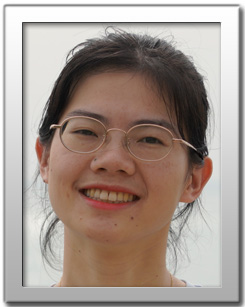 |
||||||||||
| SE.I.20.4 TT.XI.H.4 |
Francesca FASULO - CV University of Naples "Federico II" What can we learn from quantum mechanics on energy conversion? |
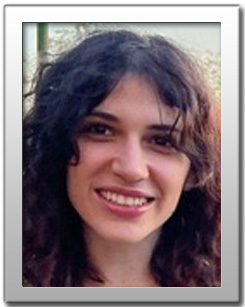 |
||||||||||
| SE.I.20.5 TT.XI.H.5 |
Paola MELI - CV University of Palermo Electrochemical reduction of CO2 to formic acid: a study of operating parameters in a microfluidic cell |
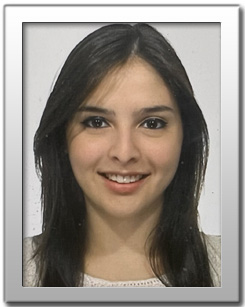 |
||||||||||
| Round table on the Topic | ||||||||||||
| 14:00 - 15:30 Therapies and Microenvironment in the Neoplastic Diseases SE.I.21 - TT.XI.I |
||||||||||||
| co-organized with University Magna Graecia of Catanzaro | ||||||||||||
| in cooperation with SIRTEPS e SITELF | ||||||||||||
 |
||||||||||||
| Chair: Antonella LEGGIO, University of Calabria | ||||||||||||
| Deepening the tumor microenvironment, a complex interplay of cells, signals, and structures, holds the key to unraveling cancer progression and devising targeted therapies. Cellular interactions, immune responses, and extracellular matrix dynamics converge to influence tumor growth and metastasis. Advances in imaging and single-cell analysis provide unprecedented glimpses into this dynamic landscape, paving the way for tailored interventions. However, challenges loom large. The heterogeneous nature of the microenvironment and its adaptive responses pose obstacles to effective treatments. Therapeutic resistance, immune evasion, and the intricate web of interactions demand innovative strategies. As researchers and clinicians navigate this intricate terrain, novel avenues emerge. Targeted therapies, immunomodulation, and precision medicine strategies are being tailored to exploit the vulnerabilities within the tumor microenvironment. Collaborative efforts bridge disciplines, fostering breakthroughs in understanding and interventions. In the quest for progress, the tumor microenvironment offers untold potential. A deeper comprehension promises to usher in an era of personalized treatments, potent combination therapies, and improved patient outcomes, redefining the battle against cancer. Here, the evolving journey through the tumor microenvironment is captured, highlighting progress, acknowledging challenges, and illuminating a trajectory that merges science, technology, and compassion to transform the landscape of cancer care. | ||||||||||||
| SE.I.21.1 TT.XI.I.1 | Introductive Keynote Catia MORELLI - CV University of Calabria Targeted Mesoporosus Silica nanoparticles as smart vehicles for highly selective drug delivery |
 |
||||||||||
| SE.I.21.2 TT.XI.I.2 | Antonella ROCCHI - CV University of L’Aquila, L’Aquila, Italy Targeted Hybrid Lipid-Polymer Nanoparticles for Glioblastoma Multiforme Treatment |
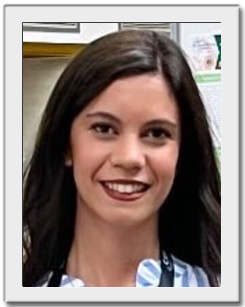 |
||||||||||
| SE.I.21.3 TT.XI.I.3 | Domenico LIGUORO IRCCS Regina Elena National Cancer Institute/ Sapienza University of Rome, Italy miR-579-3p as checkpoint for adaptation to target therapy in melanoma |
 |
||||||||||
| SE.I.21.4 TT.XI.I.4 | Palmira Alessia CAVALLARO - CV University of Calabria, Italy Novel Piperazine-Based Small Molecules in Antiviral and Anticancer Research |
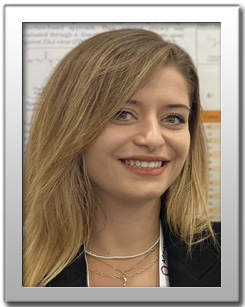 |
||||||||||
| SE.I.21.5 TT.XI.I.5 | Nicole FRATINI - CV Sapienza University of Rome, Italy Immune-modulable biological environment (MBE) bioreactor to recapitulate the complexity of the vascularized breast cancer microenvironment |
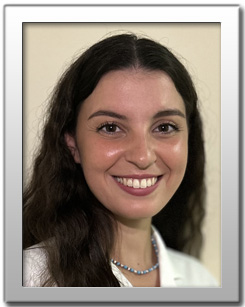 |
||||||||||
| Round table on the Topic | ||||||||||||
| 16:00 - 17:30 Cryo-Tem SE.I.22 - TT.XII.H |
||||||||||||
| co-organized with Sapienza University of Rome Chair: Beatrice VALLONE, Sapienza University of Rome |
||||||||||||
| The Cryo-TEM session at NanoInnovation 2024 will delve into the multifaceted applications and advancements of cryo-transmission electron microscopy, a technique renowned for its exceptional resolution capabilities. This session will showcase how Cryo-TEM serves as a powerful and multidisciplinary tool, enabling detailed investigations of both biological specimens and inorganic materials. Attendees will gain insights into groundbreaking research that leverages this technology to reveal previously inaccessible structural information across a wide array of fields, from life sciences to materials science. The session will be divided into two parts: an initial presentation segment followed by a roundtable discussion. In the first part, leading experts will present the latest technological developments and research findings, highlighting how Cryo-TEM is pushing the boundaries of what can be observed at the nanoscale. These presentations will underscore the technique’s versatility and its critical role in advancing our understanding of complex materials and biological systems. The roundtable discussion will offer a crucial platform for the exchange of ideas and collaborative dialogue, bringing together specialists to discuss the challenges and opportunities in the field. Participants will explore how Cryo-TEM can further contribute to multidisciplinary research and how this approach can be optimized to address emerging scientific questions. The session aims to not only showcase the current state of Cryo-TEM but also to foster a collaborative environment that encourages the sharing of knowledge and the development of innovative solutions, ensuring that the technique continues to evolve and meet the needs of diverse research communities. | ||||||||||||
| SE.I.22.1 TT.XII.I.1 |
Introductive Keynote Marina CASIRAGHI - CV University of Milan Structure and dynamics determine G protein coupling specificity at a class A GPCR |
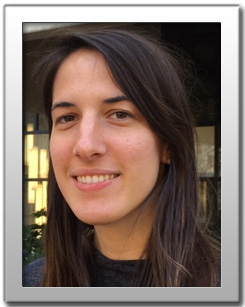 |
||||||||||
| SE.I.22.2 TT.XII.I.2 |
Alessandro PORRO - CV University of MIlan Structural determinants of pacemaker HCN channels blockage by Ivabradine and its technological advancements |
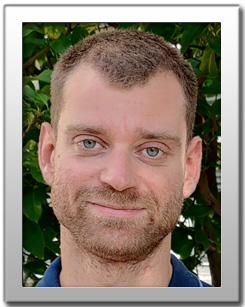 |
||||||||||
| SE.I.22.3 TT.XII.I.3 |
Giovanni BULFARO - CV University of Rome La Sapienza Development and characterization of high-affinity monoclonal antibodies targeting ErbB3 |
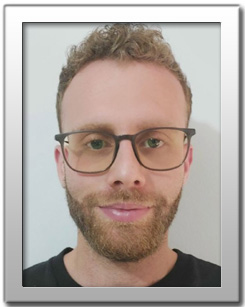 |
||||||||||
| SE.I.22.4 TT.XII.I.4 |
Sharon SPIZZICHINO - CV University of Rome La Sapienza Riboregulation as a new player in the control of cellular metabolism: clues from the cryo-EM structure of serine hydroxymethyltransferase-RNA complex |
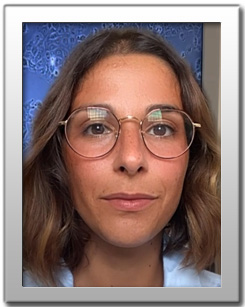 |
||||||||||
| SE.I.22.5 TT.XII.I.5 |
Federica GABRIELE - CV University of L'Aquila Cryo-EM meets parasitic diseases: validating a novel approach to target thioredoxin-like enzymes |
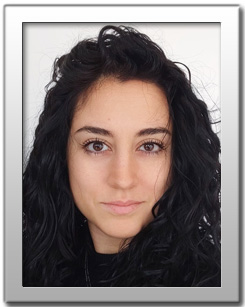 |
||||||||||
| Round table on the Topic | ||||||||||||
| 17:30 - 20:00 Cocktail & Social |
||||||||||||



